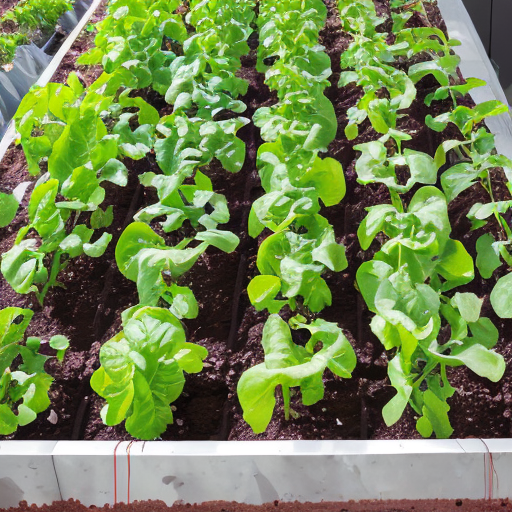Table of Contents
Introduction Morning Routine
The way you start your morning sets the tone for the rest of your day. Your morning routine can either leave you feeling energized, focused, and ready to tackle the challenges ahead, or it can leave you feeling sluggish, stressed, and unproductive. It’s no surprise, then, that highly successful people often credit their morning routines as a key factor in their success.
But what exactly do these successful individuals do differently in the morning compared to the average person? In this blog post, we’ll explore 10 morning routine habits that are common among highly successful people. From waking up early to practicing gratitude, these habits can help you start your day on the right foot and set yourself up for success.
Whether you’re an entrepreneur, a student, or simply someone looking to improve your productivity and well-being, incorporating these habits into your morning routine can make a significant difference in your life. So, let’s dive in and discover the secrets of highly successful people’s morning routines!
1. Wake Up Early
One of the most common habits among highly successful people is waking up early. While the exact time may vary, many successful individuals start their day between 4 am and 6 am. Waking up early allows you to have a quiet, distraction-free time to focus on your goals and priorities before the demands of the day take over.
Here are some benefits of waking up early:
- Increased productivity: Early mornings tend to be quieter and less distracting, allowing you to focus on important tasks without interruptions.
- More time for self-care: Waking up early gives you extra time to engage in self-care activities like exercise, meditation, or reading.
- Reduced stress levels: By starting your day earlier, you can avoid the stress and rush of trying to get everything done in a short period.
Examples of successful people who wake up early include:
- Tim Cook, CEO of Apple, who wakes up at 3:45 am to start his day with emails and exercise.
- Michelle Obama, former First Lady of the United States, who wakes up around 4:30 am to work out before her family wakes up.
- Richard Branson, founder of the Virgin Group, who wakes up at 5 am to exercise and spend time with family.
While waking up early may be challenging at first, it’s a habit that can be developed over time. Start by gradually setting your alarm earlier and establishing a consistent sleep schedule. With practice, you may find that waking up early becomes a natural and enjoyable part of your morning routine.
2. Hydrate and Fuel Your Body
After waking up, one of the first things you should do is hydrate your body. Drinking water first thing in the morning helps to rehydrate your body after a long night’s sleep, jumpstarts your metabolism, and aids in digestion. Aim to drink at least 8 ounces (240 ml) of water upon waking.
In addition to hydration, fueling your body with a nutritious breakfast is crucial for maintaining energy levels and mental clarity throughout the morning. A healthy breakfast should include a balance of protein, complex carbohydrates, and healthy fats.
Some examples of nutritious breakfast options include:
- Overnight oats with fresh berries, nuts, and a sprinkle of cinnamon
- Scrambled eggs with spinach, tomatoes, and whole-grain toast
- Greek yogurt with a sliced banana, chia seeds, and a drizzle of honey
- Smoothie made with almond milk, frozen fruit, spinach, and protein powder
Avoid sugary cereals, pastries, and processed foods that can lead to a quick energy spike followed by a crash. Instead, opt for whole, minimally processed foods that will provide sustained energy and keep you feeling full until lunchtime.
Everyone’s nutritional needs are different, so it’s essential to listen to your body and choose foods that make you feel your best. Experiment with different breakfast options and find what works for you and your lifestyle.
3. Exercise or Stretch
Incorporating physical activity into your morning routine can have numerous benefits for both your physical and mental well-being. Morning exercise can help boost your energy levels, improve your mood, and increase your focus and productivity throughout the day.
You don’t need to spend hours at the gym to reap the benefits of morning exercise. Even a short 10-15 minute workout or stretching session can make a significant difference in how you feel. Here are some quick and effective morning workout ideas:
- High-Intensity Interval Training (HIIT): Alternate between short bursts of intense exercise and brief periods of rest. For example, 30 seconds of jumping jacks followed by 30 seconds of rest, repeated for 10 minutes.
- Yoga or stretching: Gentle yoga flows or stretching routines can help improve flexibility, reduce muscle tension, and promote relaxation.
- Bodyweight exercises: Simple exercises like squats, lunges, push-ups, and plank holds can be done anywhere without equipment.
- Brisk walking or jogging: If you prefer to exercise outdoors, a quick walk or jog around your neighborhood can provide a great cardiovascular workout.
The key is to choose an activity that you enjoy and that fits into your morning schedule. If you’re new to morning exercise, start with just a few minutes a day and gradually increase the duration and intensity over time.
To listen to your body and respect your limits. If you have any pre-existing health conditions or concerns, consult with your doctor before starting a new exercise routine.
4. Meditate or Practice Mindfulness
In addition to physical exercise, incorporating a mindfulness practice into your morning routine can have a profound impact on your mental and emotional well-being. Meditation and mindfulness can help reduce stress, improve focus, and increase overall feelings of calm and clarity.
If you’re new to meditation, start with just a few minutes a day and gradually work your way up to longer sessions. Here are some tips for starting a morning meditation practice:
- Find a quiet, comfortable space where you won’t be disturbed.
- Sit in a comfortable position with your spine straight and your eyes closed.
- Focus on your breath, observing the sensation of the air moving in and out of your body.
- When your mind wanders (which it inevitably will), gently redirect your attention back to your breath.
- Start with just 2-3 minutes of meditation and gradually increase the duration over time.
In addition to formal meditation, you can also incorporate mindfulness into your morning routine by simply bringing your full attention to the present moment. For example, when you’re brushing your teeth or making your breakfast, focus on the sensations, smells, and sounds of the experience, rather than letting your mind wander to your to-do list or worries about the day ahead.
Regular mindfulness practice can help you develop a greater sense of self-awareness, emotional regulation, and resilience in the face of stress and challenges.
Some successful people who credit meditation and mindfulness as key components of their morning routines include:
- Arianna Huffington, founder of The Huffington Post, who starts her day with 20-30 minutes of meditation.
- Jack Dorsey, CEO of Twitter and Square, who meditates for 30 minutes every morning.
- Oprah Winfrey, media executive and philanthropist, who practices transcendental meditation twice a day.
5. Read and Learn
Dedicating time to reading and learning in the morning can help stimulate your mind, spark creativity, and provide valuable insights and knowledge that you can apply throughout your day. Many successful people make reading a priority in their morning routines, whether it’s reading the news, industry blogs, or personal development books.
Here are some benefits of incorporating reading and learning into your morning routine:
- Expands your knowledge and perspective: Reading exposes you to new ideas, concepts, and viewpoints that can broaden your understanding of the world and your industry.
- Stimulates creativity and problem-solving: Engaging with new information can help spark creative ideas and provide insights for solving problems and challenges.
- Provides a sense of accomplishment: Starting your day with learning and personal growth can give you a sense of accomplishment and set a positive tone for the rest of your day.
When choosing what to read in the morning, consider your personal and professional goals, as well as your interests and curiosities. Some options might include:
- Industry blogs or newsletters to stay up-to-date on trends and developments in your field
- Personal development books or articles to improve skills like leadership, communication, or time management
- Biographies or memoirs of successful people to learn from their experiences and insights
- Fiction or poetry to engage your imagination and provide a mental break from work-related topics
Examples of successful people who prioritize reading in their morning routines include:
- Bill Gates, co-founder of Microsoft, who reads for an hour every morning as part of his routine.
- Oprah Winfrey, who starts her day with inspirational readings and meditation.
- Warren Buffett, CEO of Berkshire Hathaway, who dedicates 80% of his morning to reading.
The key is to find reading material that resonates with you and supports your personal and professional growth. Make reading a consistent part of your morning routine, even if it’s just for 15-20 minutes a day, and you’ll likely start to see the benefits in your daily life.
6. Plan and Prioritize Your Day
Taking a few minutes in the morning to plan and prioritize your day can help you stay focused, productive, and on track with your goals. By setting clear intentions and identifying your most important tasks, you can approach your day with a sense of purpose and direction.
Here are some tips for creating an effective to-do list:
- Start with a brain dump: Write down all the tasks, projects, and commitments on your mind, no matter how big or small.
- Identify your top priorities: From your brain dump list, select the 2-3 most important or time-sensitive tasks that you need to complete that day.
- Break down larger tasks: If a task feels overwhelming, break it down into smaller, more manageable steps that you can tackle one at a time.
- Be realistic: Don’t overload your to-do list with more tasks than you can realistically accomplish in a day. Be honest with yourself about your time and energy constraints.
- Use a format that works for you: Whether it’s a handwritten list, a digital app, or a bullet journal, find a to-do list format that is easy and enjoyable for you to use consistently.
In addition to creating a to-do list, consider setting aside time in the morning to review your calendar and schedule for the day ahead. This can help you anticipate any potential challenges or conflicts and make any necessary adjustments to your plan.
Some successful people who swear by morning planning and prioritization include:
- Benjamin Franklin, one of the Founding Fathers of the United States, who famously asked himself each morning, “What good shall I do this day?”
- Kenneth Chenault, former CEO of American Express, who spends his mornings reviewing his calendar and prioritizing his tasks for the day.
- Sheryl Sandberg, COO of Facebook, who starts her day by reviewing her schedule and making a list of her top priorities.
The goal of morning planning and prioritization is not to create a rigid, inflexible schedule, but rather to provide a sense of structure and direction for your day. Be willing to adapt and adjust your plan as needed, while still staying true to your overall goals and priorities.
7. Tackle the Most Important Task First
Once you’ve planned and prioritized your day, it’s time to dive into your most important task (MIT). Your MIT is the one task on your to-do list that will have the greatest impact on your goals and progress, and it’s often the task that requires the most focus, energy, and discipline to complete.
Here are some benefits of tackling your MIT first thing in the morning:
- Increased productivity: By completing your most important task early in the day, you build momentum and a sense of accomplishment that can carry you through the rest of your tasks and responsibilities.
- Reduced procrastination: When you tackle your MIT first, you’re less likely to procrastinate or put off important work in favor of easier or less challenging tasks.
- Improved focus and energy: In the morning, you typically have higher levels of focus, willpower, and mental clarity, which makes it an ideal time to tackle your most demanding or complex tasks.
To identify your MIT, ask yourself:
- Which task on my to-do list will have the greatest impact on my goals and progress?
- Which task requires the most focus, energy, or discipline to complete?
- Which task am I most likely to procrastinate on or avoid if I don’t tackle it first?
Once you’ve identified your MIT, block out a specific time in your morning schedule to work on it, and commit to focusing solely on that task until it’s complete or you’ve made significant progress.
Some successful people who prioritize their MITs in the morning include:
- Mark Twain, renowned author, who famously said, “Eat a live frog first thing in the morning, and nothing worse will happen to you the rest of the day.”
- Brian Tracy, productivity expert and author, who recommends tackling your most important task first thing in the morning when your energy and willpower are at their highest.
- Arianna Huffington, who sets aside time each morning to work on her top priorities before diving into meetings and emails.
Tackling your MIT first thing in the morning doesn’t guarantee that the rest of your day will be easy or challenge-free. However, it does ensure that you’re making progress on your most important goals and responsibilities, even if unexpected obstacles or distractions arise later in the day.
8. Practice Gratitude
Incorporating a gratitude practice into your morning routine can have a profound impact on your mindset, resilience, and overall well-being. By focusing on the things you’re thankful for, you shift your attention away from stress, negativity, and scarcity, and towards a more positive, abundant perspective.
Here are some benefits of practicing gratitude in the morning:
- Improved mood and happiness: Focusing on the things you’re grateful for can boost your mood and overall sense of happiness and contentment.
- Increased resilience: When you regularly practice gratitude, you build a mental reservoir of positive experiences and emotions that can help you bounce back from challenges and setbacks more quickly.
- Enhanced relationships: Expressing gratitude towards others can strengthen your relationships and create a more positive, supportive social network.
There are many ways to incorporate gratitude into your morning routine, such as:
- Gratitude journaling: Take a few minutes each morning to write down 3-5 things you’re grateful for, no matter how big or small. This could include anything from your health and loved ones to a delicious cup of coffee or a beautiful sunrise.
- Verbal expressions of gratitude: Share your gratitude with others by telling them how much you appreciate them or thanking them for specific things they’ve done or qualities they possess.
- Gratitude meditation: During your morning meditation or mindfulness practice, focus on the things you’re grateful for and allow yourself to fully experience and savor those positive emotions.
Examples of successful people who practice gratitude include:
- Oprah Winfrey, who keeps a gratitude journal and encourages others to do the same.
- Tony Robbins, motivational speaker and coach, who starts each morning by thinking of three things he’s grateful for and three things he’s excited about.
- Richard Branson, who credits his success and happiness in part to his daily practice of gratitude and appreciation.
The key to a successful gratitude practice is consistency and authenticity. Don’t just go through the motions of listing things you’re grateful for; take the time to truly feel and experience the positive emotions associated with each item on your list. With regular practice, gratitude can become a powerful tool for transforming your mindset and enhancing your overall quality of life.
9. Avoid Distractions
One of the biggest challenges to a productive and focused morning routine is distractions. Whether it’s the temptation to check your phone, scroll through social media, or respond to non-urgent emails, distractions can quickly derail your momentum and eat up valuable time and energy.
Here are some common morning distractions and strategies for avoiding them:
- Checking your phone: Resist the urge to check your phone first thing in the morning. Instead, wait until after you’ve completed your morning routine or tackled your MIT to respond to messages and notifications.
- Social media: If you find yourself getting sucked into social media in the morning, consider using app blockers or timers to limit your usage, or save your social media time for later in the day.
- Email: Unless it’s absolutely necessary, avoid checking your email first thing in the morning. Instead, set aside specific times throughout the day to respond to emails, and use filters and labels to prioritize urgent messages.
- Multitasking: Trying to do too many things at once can be a major distraction and productivity killer. Instead, focus on one task at a time, and give it your full attention before moving on to the next.
- Clutter and disorganization: A cluttered or disorganized environment can be visually and mentally distracting. Take a few minutes each morning to tidy up your workspace and create a calm, focused environment.
The key to avoiding distractions is to be proactive and intentional about how you spend your time and attention. By setting clear boundaries and priorities, and creating an environment that supports focus and productivity, you can minimize distractions and stay on track with your goals and responsibilities.
Some successful people who prioritize focus and avoid distractions in the morning include:
- Steve Jobs, co-founder of Apple, who famously wore the same outfit every day to minimize decision fatigue and focus on more important tasks.
- Cal Newport, author of “Deep Work,” who advocates for creating distraction-free environments and scheduling focused work blocks throughout the day.
- Elon Musk, CEO of Tesla and SpaceX, who starts his day by responding to critical emails for 30 minutes, then focuses on his top priorities without interruption.
Avoiding distractions is a skill that takes practice and discipline to develop. Be patient with yourself, and celebrate small victories along the way. Over time, you’ll build the habits and routines that support a focused, productive morning and set you up for success throughout the day.
10. Be Consistent
Perhaps the most important habit of a successful morning routine is consistency. It’s not enough to practice these habits occasionally or only when you feel like it; the real benefits come from making them a regular, non-negotiable part of your daily life.
Here are some tips for maintaining a consistent morning routine:
- Start small: If you’re new to morning routines, don’t try to overhaul your entire schedule overnight. Instead, start with one or two small habits and build from there.
- Set realistic expectations: Be honest with yourself about what you can realistically accomplish in the morning, given your current schedule and responsibilities. Don’t set yourself up for failure by trying to do too much too soon.
- Create a visual reminder: Write down your morning routine and post it somewhere visible, like your bathroom mirror or refrigerator, to remind yourself of your commitments and priorities.
- Prepare the night before: Set yourself up for success by preparing for your morning routine the night before. This might include laying out your workout clothes, prepping your breakfast, or reviewing your to-do list.
- Celebrate your progress: Acknowledge and celebrate the small victories along the way, whether it’s waking up on time, meditating for five minutes, or tackling your MIT. These small wins can help build momentum and motivation over time.
Building a consistent morning routine is a process, not a destination. There will be days when you fall short or get off track, and that’s okay. The key is to keep coming back to your routine, day after day, and recommitting to your goals and priorities.
Some successful people who credit their consistency and discipline for their morning routines include:
- James Clear, author of “Atomic Habits,” who emphasizes the importance of small, consistent actions over time.
- Jocko Willink, retired Navy SEAL and leadership coach, who wakes up at 4:30 am every day to exercise, meditate, and plan his day.
- Michelle Obama, former First Lady of the United States, who consistently wakes up early to exercise and spend time with her family before starting her workday.
Conclusion Morning Routine
In conclusion, the morning routines of highly successful people are not a one-size-fits-all formula, but rather a collection of habits and practices that support their goals, values, and priorities. By incorporating these 10 habits into your own morning routine, you can set yourself up for a more productive, focused, and fulfilling day.
The key to a successful morning routine is consistency, experimentation, and self-awareness. Pay attention to what works for you, and be willing to adapt and adjust your routine as needed. With time and practice, you’ll develop the habits and mindset that support your success and well-being, both in the morning and throughout the day.












